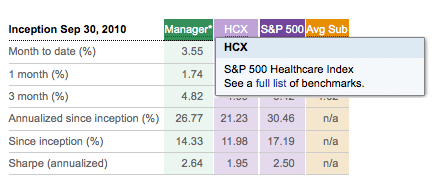 Until recently, we displayed Covestor model portfolio performance in comparison to just one benchmark, the S&P 500. This large-cap U.S. equity index was a helpful benchmark for a portion of our models, but for those with different mandates – like small-cap stocks or international focused portfolios – the S&P 500 was of course a less helpful comparison to understand performance or the investment objective of the model.
Until recently, we displayed Covestor model portfolio performance in comparison to just one benchmark, the S&P 500. This large-cap U.S. equity index was a helpful benchmark for a portion of our models, but for those with different mandates – like small-cap stocks or international focused portfolios – the S&P 500 was of course a less helpful comparison to understand performance or the investment objective of the model.
To improve this, we’ve just rolled out a whole new set of benchmarks for Covestor models. On model pages, model search and performance widgets, you now see a full range of indexes applied as benchmarks for models, consistent with the particular model’s strategy. Here’s the full list of benchmarks (there are 43 as of 4/26/11).
To view the benchmark for any particular model, mouse over the second (pink) column header on the table on the right side of the ‘Performance and Risk’ section on the model page. For example, here’s the benchmark for Robert Freedland’s Healthcare model – HCX, the S&P Healthcare Index:

Our Chief Investment Officer Raphael Mennicken used the following two main criteria to determine the most appropriate benchmark for each model:
1) Stated strategy from the model manager
2) Actual trading history over the lifetime of the model (not just current holdings)
In addition:
– For benchmarks related to market cap size, a standard definition was applied across models.
– For models that have an asset allocation strategy spanning many asset classes, we assigned a risk-based benchmark (for example, the Dow Jones U.S. Moderate Index). This was based on analysis of the model’s volatility relative to the broader market.
– For models with exotic strategies, it is often difficult to determine the risk and appropriate benchmark in the model at launch. For such models, we assigned an equity benchmark at launch and may apply a risk-based index benchmark once sufficient trading history is available.
Note also that on model page performance charts, the comparison to the S&P 500 remains alongside the new benchmark by default, but it can be removed if you wish by unchecking the ‘S&P 500’ box above the chart.



